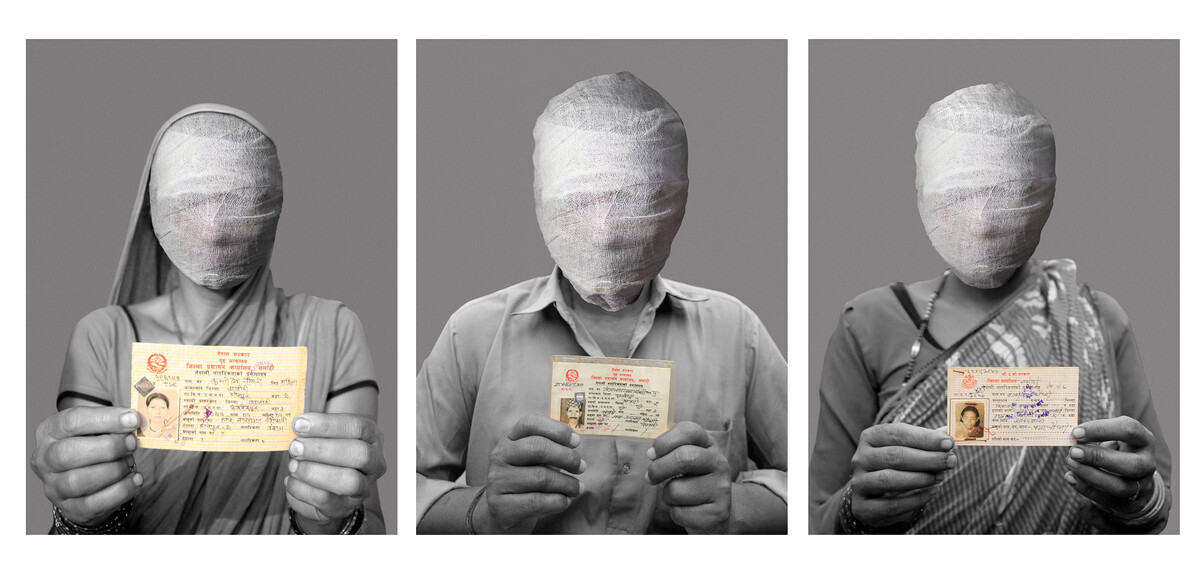March 9–23, 2019
Fabric(ated) Fractures, a collaboration between the Samdani Art Foundation and Alserkal, opened in Concrete on March 9, with performances by exhibiting artists Ayesha Jatoi, Joydeb Roaja, and Reetu Sattar. The group exhibition, curated by Diana Campbell Betancourt, Samdani Art Foundation Artistic Director and Chief Curator of Dhaka Art Summit, features works by 15 artists: Pablo Bartholomew, Kanak Chanpa Chakma, Rashid Choudhury, Rajesh Vangad and Gauri Gill, Shilpa Gupta, Hitman Gurung, Ayesha Jatoi, Ashfika Rahman, Joydeb Roaja, Reetu Sattar, Kamruzzaman Shadhin, Debasish Shom, Jakkai Siributr, and Munem Wasif.
On show until March 23, 2019 in the OMA-designed Concrete in Alserkal Avenue, Fabric(ated) Fractures provides a platform to amplify the voices of artists from Bangladesh and South and Southeast Asia, and explores ‘sensitive spaces’—spaces that challenge ideas of nation, state, and territory. The exhibition design intervenes in the architecture of Concrete, spanning its height with community-based artworks that are humanist acts of insurgency against rising polarisation in the region (and the rest of the world), and grounding the exhibition in a more porous pre-colonial past through the use of a vernacular mud floor found in many South Asian villages.
While this exhibition was born within the borders of what is now considered Bangladesh, Fabric(ated) Fractures examines how the lines demarcating this young country are constantly shifting. The works of the 15 artists break down reductive national and regional narratives, and reformulate them from a more local and human perspective. Regional lenses, including overarching headers such as “South Asia” or “MENASA,” tend to filter out the many traces of difference found on a local level, and this exhibition aims to weave a more complex picture of the vibrant and diverse threads that comprise a yet-to-be crystalised identity in the wounded border areas related to Bangladesh—which cannot be defined with a single regional framing device.
The militarisation of the Chittagong Hill Tracts inspires the drawings of Joydeb Roaja, who comes from the indigenous Tripura community. The military motifs from the “Generation Wish Yielding Trees and Atomic Tree” series are reflected in his alpona installation in The Yard in Alserkal Avenue, which can be viewed throughout the duration of the exhibition. Through his work, Pablo Bartholomew traces the links between geographically fractured indigenous Chakma communities (ethnic minorities in Myanmar, India, and Bangladesh), weaving together science, myth, legend, and tradition to explore a cross-border ethnic identity. The Bangladeshi Chakma artist Kanak Chanpa Chakma revisits the “Ramu Incident” through her series of paintings, “Soul Piercing,” juxtaposing photographic documentation and newspaper clippings from the 2012 incident against imagery of peaceful Buddhist architecture.
Speaking to the potential found in seeing through multiple points of view, the late Rashid Choudhury’s majestic woven tapestries allude to village life in Bengal prior to externally introduced religious divides, and teem with movement, referencing pluralistic rituals of celebration and worship. Similarly, Rajesh Vangad and Gauri Gill’s “Fields of Sight” series bring to question the politics of landscape as the site through which trauma is registered, providing overlapping and varying perspectives onto the same landscape.
Hitman Gurung’s ongoing series “This is My Home, My Land and My Country” addresses the conflicted history between the Tharu indigenous community of the Terai region of Nepal and the government, and Ayesha Jatoi’s Residue, which the artist performed on opening night, explores a metaphorically burdened act in uncertain times of putting away the remnants of love, longing, and loss. Jatoi will perform the piece again on March 18 at 7:15pm at Concrete. Ashfika Rahman’s powerful portrait series, “Rape is Political,” depicts rape victims in the Khagrachari hills area, located at the militarised border between India, Bangladesh, and Myanmar, where state administrative machinery is used to protect rapists.
Reetu Sattar performed Harano Sur (Lost Tune) on opening night, a piece that focuses on the harmonium, a musical instrument that is tightly integrated into the traditional culture of Bangladesh, but is in danger of disappearing. A film documents a performance that brought together musicians, each playing three notes of the seven notes of the harmonium as part of the exhibition. The performance will take place again on March 18 at 7pm. Kamruzzaman Shadhin’s installation Haven is Elsewhere was created through a large-scale action: a year and a half spent exchanging the clothes of refugees at Bangladesh’s southern border with Southeast Asia for new garments. The refugees’ clothes were joined into a monumental piece of fabric embellished with traditional Bangladeshi kantha embroidery.
The Indian artist Shilpa Gupta’s work, which debuted at the 2014 Dhaka Art Summit, addresses chitmahals—former landlocked islands of India within Bangladesh, and Bangladesh within India—reflecting on the long-standing relationship between “illegal” people and their ancestral land. Debasish Shom’s body of work, In the Rivers Dark, speaks to the fear of displacement and the desire to hold on to home, no matter how dark and dangerous the circumstances surrounding it are. Through his work The Outlaw’s Flag, Thai artist Jakkai Siributr provides a critical perspective on rising communal tensions and Buddhist-Muslim relations in South and Southeast Asia, which have become intensified by the mass movements of populations. Munem Wasif’s haunting series of black and white photographs of the blurred boundary of Bangladesh and India, Land of Undefined Territory, conceals the intense human interaction within its surface.
Public performance schedule
March 18
7pm: Reetu Sattar, Harano Sur (Lost Tune)
7:15pm: Ayesha Jatoi, Residue
For all press enquiries: Rania Habib, rania [at] alserkalavenue.ae, T +971 50 100 1105



